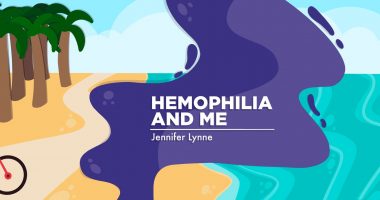Looking at Environmental Protection Through the Lens of Disability

Climate change has been a hot topic in our circles lately. We feel it very much in the Philippines, where hot summers in the months of April and May have quickly turned into a season of strong typhoons and dangerous floods. Recently, a major typhoon hit the province of Leyte, causing a tragic landslide.
Individuals can only do so much to “save” our planet (and humanity) from the drastic effects of climate change. But we can make a difference by doing little things. We can boycott single-use plastics if we’re in a position to do so, lower our energy consumption, and deal with waste appropriately through proper separation and recycling.
Of course, having a disability factors into the equation about how much one can do to help the earth. Many people with disabilities must resort to less eco-friendly practices in order to address health issues and to thrive, although that’s not to say disabled people can’t take steps to be eco-friendly.
For instance, my husband, Jared, infuses factor products to treat his hemophilia. This procedure involves single-use plastic tubes, metal needles, and glass bottles.
According to a 2019 National Geographic article, one expert estimated that 25% of the waste generated by U.S. healthcare facilities is plastic. This is because the equipment used to treat patients needs to be sterile, and plastic serves that need well.
When my mom was ill with cancer, she needed to drink from plastic straws due to the limitations she had. And by the time she was bedridden, she needed to use disposable adult diapers.
In Japan, a country with a rapidly aging population, adult diaper waste is a growing concern, as The New York Times reported last year. Used diapers are likely to end up in incinerators, like most of the country’s waste. Compared with other types of waste, diapers require more fuel to burn, leading to costly waste management bills and high carbon emissions.
To help alleviate this problem, the Japanese town of Houki converted one of the town’s incinerators into a diaper recycling plant, which in turn produces fuel for a public bathhouse, the Times reported. This, in turn, helps to lower natural gas costs. Japan is fortunate to have the resources to come up with this creative solution.
Since there are limitations to taking steps to protect the environment when accessing or providing healthcare by people with disabilities or those who work at treatment centers, I offer the following suggestions.
If you can afford to, avoid single-use plastics.
If using single-use plastics cannot be avoided, be mindful of how often you use them and how you dispose of them. Seek out alternatives to the plastic bags you use for shopping or carrying things. At home, stock up with multiple-use, high-quality storage containers.
Leave single-use plastic products to the ones who really need them to live. This includes people with disabilities, older people, and babies, for example.
Avoid fast fashion.
I am guilty of patronizing fast fashion — which refers to the mass production of high-fashion clothing trends — because I like dressing up. My clothing budget is quite low, hence the temptation for cheap clothes from chain retailers.
According to a 2019 article by Insider’s Morgan McFall-Johnsen, the fashion industry is responsible for producing 10% of humanity’s carbon emissions, is the second-largest consumer of the world’s water supply, and pollutes the oceans with microplastics.
What percentage of clothing in your closet do you actually wear? Think about it, and try not to buy more than you would actually use. Instead of shopping for new clothes, why not shop at secondhand stores or learn to rework old clothing into more modern styles?
Jared’s entire collection of clothes fits into just one drawer. This makes his wardrobe easier to organize. He wears a “uniform” of plain, minimalist T-shirts with classic denim jeans or shorts. When I first met him in college, he still wore clothes from as early as sixth grade! He only updated his wardrobe when he built up muscle as an adult and needed to switch to clothing a few sizes bigger.
Jared doesn’t go out as often as I do, and bleeding episodes occasionally force him to stay at home. He also considers himself more of an indoor type. So he doesn’t think he needs many clothes.
But even if one’s lifestyle is active or outgoing, we can find some perspective from people like Jared. After all, how many clothes do we really need? As my drawers are now filled to the brim with clothes, I actively try to avoid buying new ones. Furthermore, I now support a local seamstress instead of buying from retail chains. The sewing takes time, but the outcome is often top quality and looks great. It’s also more eco-friendly, and I get to support someone’s livelihood.
Ride a bike instead of driving.
I’ve been doing this more often lately due to high gas prices. But regardless of the cost of gasoline, pedaling instead of driving is always the more eco-friendly option. For people with hemophilia, cycling is among the activities recommended by some hemophilia organizations, as it is generally considered to be safe.
Other people with disability often can benefit from the mobility assistance and pleasure that cycling provides. Various types of bikes are available for different accessibility needs. Handcycles rely on upper body strength and are useful for people with lower limb disabilities. Recumbent bikes place the body in a more comfortable position and are great for those with generally limited mobility. Modern-day bikes can be equipped with modifications in the form of supports, motors, additional seats, and different wheel configurations that help to make cycling easier and more accessible.
These are just three things one can do to help our planet. There are certainly more, so please don’t feel limited to these options. Do you have additional suggestions? Please share in the comments below.
Note: Hemophilia News Today is strictly a news and information website about the disease. It does not provide medical advice, diagnosis, or treatment. This content is not intended to be a substitute for professional medical advice, diagnosis, or treatment. Always seek the advice of your physician or another qualified health provider with any questions you may have regarding a medical condition. Never disregard professional medical advice or delay in seeking it because of something you have read on this website. The opinions expressed in this column are not those of Hemophilia News Today or its parent company, BioNews, and are intended to spark discussion about issues pertaining to hemophilia.








Comments